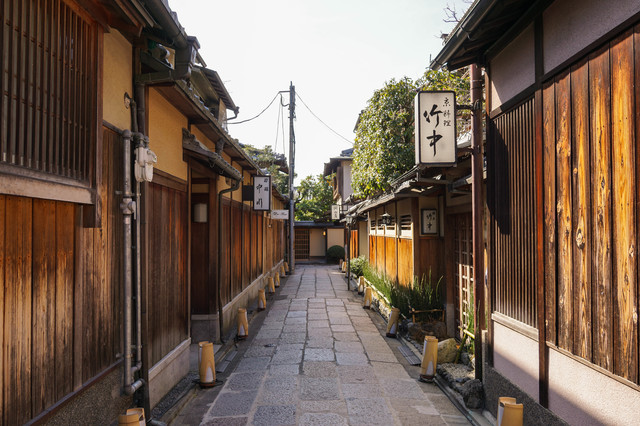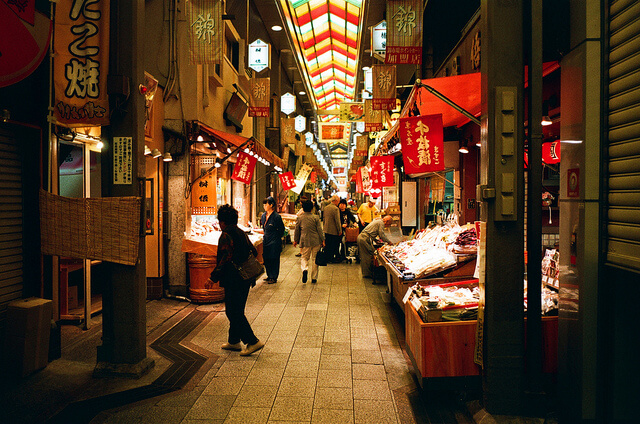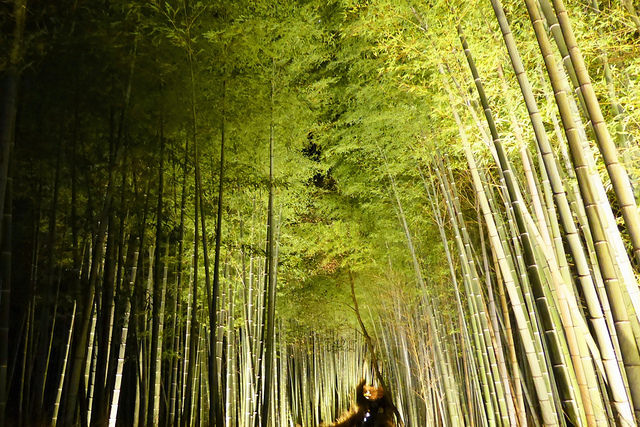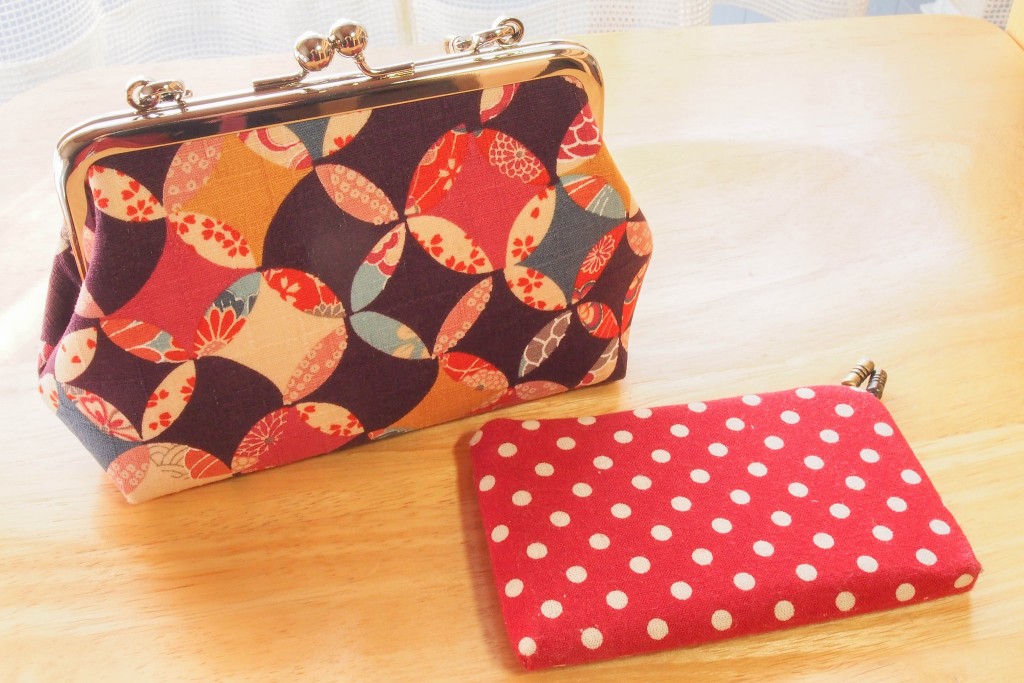
50 Things to Do in Kyoto
Aside from being a symbolic sightseeing spot, Kyoto has lots of other attractive points that inspire interest. This article consolidated the sightseeing spots and activities that are definitely worthy of recommendation by the inhabitants in Kyoto.
This post may contain affiliate links. If you buy through them, we may earn a commission at no additional cost to you.
Map
1. Nanzen Temple's Suirokaku Aqueduct [Sightseeing Spots]
Nanzen Temple is the head temple of the southern faction of the Rinzai school of Buddhism. With its large triple gate welcoming worshippers and its splendid temple building, it's one of the many temples in Kyoto filled with modest charm. Its biggest charm is the Suirokaku Aqueduct that sits quietly in the Japanese landscape. It was built in 1888 to carry water from Lake Biwa, and the original brick arch still remains inside the temple. If you get a chance to walk around the area, it's recommended that you head there from Keage Station on the subway. Once you pass through the brick tunnel, Nanzen Temple will welcome you.
English homepage: http://www.nanzen.net/english/
2. Shouren-in's illuminations [Sightseeing Spots]
Shouren-in, in Higashiyama, is near the downtown areas of Kawaramachi and Gion, so it's recommended to drop by during sightseeing. On the temple grounds is a Japanese garden complete with a pond and a path around it. Every year from March to May and October to December only, the grounds are lit up beautifully in the evening.
English homepage: http://www.shorenin.com/english/index.html
3. Honen-in [Sightseeing Spots]
Honen-in, in Shishigatani, is a hidden gem that is reminiscent of a secret hideout. Pass through the patched grass temple gate and enter the grounds that are surrounded by trees; you're taken into the stillness that separates you from the hustle and bustle of the main street.
Japanese homepage: http://www.honen-in.jp/index.html
4. Kyoto Sanjo Starbucks (Summer Only) [Food & Drink]
When you're tired from shopping, you should stop by a Starbucks for a rest. They have breeze-enjoying floor in summer time where you can enjoy the cool evenings; but in May and September, you can also enjoy in the daytime as well. Enjoy coffee there while taking in the sight of the river!
English homepage: http://www.starbucks.co.jp/en/search/detail.php?id=68&search_condition=Kyoto&pref_code=26&pageID=2
5. Chourakukan Café [Food & Drink]
This cafe used to be a businessman's villa before it was remodeled. Since it was used as a reception hall by important people from both inside and outside the country, the beautiful fixtures such as chandeliers and stained glass windows have been kept. It's near Yasaka Shrine, so visit this cafe together and you can experience both the Japanese and the Western sides of Kyoto.
Japanese homepage: http://www.chourakukan.co.jp/cr/cafe.php
6. Ishibe Alley [Sightseeing Spots]

PIXTA
Ishibe Alley is in is an area that conserves traditional architectural structures, and it's definitely one you should walk down when you come and go from Kodai Temple and the downtown areas. Among the scene of the houses' stone walls, are also many well-established restaurants and inns. These narrow streets of Kyoto definitely is a maze, but there are many attractive places to take photos.
7. Cooking Classes for Sushi and Other Japanese Food [Activity]
Kyoto’s food is just as unique and historic as the city’s townscape, and the best way to understand it and the culture that surrounds it is by attempting to make it with your own two hands! There are many cooking classes in Kyoto that will not only teach you how to make local specialties like obanzai (home-cooked Kyoto specialties), but also classics like sushi and okonomiyaki. Some of them even let you dress up in traditional Japanese robes like yukata or kimono when cooking or eating the food you cooked! Here are some English-speaking class options by airKitchen to start off with. They’re all led by seasoned English-speaking locals!
8. The scrubbing brushes of Naito Rikimatsu [Shopping]
Located near the Sanjo Bridge, the Naito Rikimatsu store has no sign snugly fitting among the buildings. The shop specializes in daily necessities like scrubbing brushes and brooms made of hemp palm. When Terence Conran first saw these items and their high quality, he fell in love at first sight and added them to his stores in London.
9. Mamemasa's Goshiki-mame [Shopping]
Mamemasa was established in 1884, as a corn merchant and is now a Japanese confectionery store. Their cream Goshikimame is one of their best sellers. It's a soft treat made of peanuts covered in multicolored creams. Modernly arranged Japanese traditional confection is a very popular souvenir.
Japanese homepage: http://www.mamemasa.co.jp/
10. Matsuhiro Shoten's clasp purses [Shopping]
On offer at Matsuhiro are craftsman-made purses with metal clasps with Japanese patterns. Inside the shop are hundreds of purses that differ in both pattern and design, enough that you won't be able to easily choose one. The more you look at the clasp purses, the more you feel eager to use them, so many people buy a couple of purses in different patterns. The arabesque-patterned sign indicates the way to the store.
Japanese homepage: http://matsuhiroshoten.com/index.htm
11. Shimogamo Shrine Tadasu no Mori [Sightseeing Spots]
On the grounds of the UNESCO World Heritage Site, Shimogamo Shrine, there is a large primeval forest, Tadasu no Mori. Inside of this forest, during autumn you can enjoy the leaves that turn bright red. It is also said to be a power spot and you can feel the sacred atmosphere. Shimogamo Shrine holds various events throughout the year, so it's recommended to check their web page if you want to visit.
English homepage: http://www.shimogamo-jinja.or.jp/english.html
12. Fushimi Inari Shrine [Sightseeing Spots]
This is the head temple of the 30,000 Inari shrines that are all over Japan. Inari is the god of harvest and business. It is beloved by both local people and tourists. Since the entirety of Mt. Inari is part of the Shinto shrine precincts, there are torii gates all the way up to the summit. These gates are famous as a sightseeing spot. Also, since there is no entrance fee and no closing time, it's popular as a walking course around Mt. Inari.
Japanese homepage: http://inari.jp/
13. Akari Design Workshop [Activity]
Akari Design Workshop sells original light fixtures made from hand-made washi paper. They also make order-made items, so how does getting an original item for your home sound for you? They also have an area where you can experience making washi lights, so you can make your own lighting.
English homepage: http://www.kyoto-akari.com/english
14. Nishiki Market [Shopping]

Photo by Benny(I am empty) on Flickr
Nishiki Market, also called "Kyoto's kitchen", lies beside the shopping district where young people gather. Along this 390 meter market are shops that have been decorating Kyoto's dining tables for the past 400 years. Kyoto vegetables and dried foods, pickles, sushi and other items are sold, and you can eat while you walk. Since it's a covered arcade, it's easy to shop there on rainy days too.
15. The Tea House at the summit of Mt. Yoshida [Food & Drink]
The popular, gentle hiking course to the summit of Mt. Yoshida starts near Kyoto University. On the top of the mountain is a renovated tea house cafe named Moan. On certain days they hold tea ceremonies that don't require prior reservations to participate in. Enjoy the aroma of the freshly prepared tea.
Japanese homepage: http://www.mo-an.com/index.html
16. Kyoto International Manga Museum [Arts]
This museum was the first manga museum in Japan that opened in 2006 using an elementary school building that had closed down. The building retains a nostalgic atmosphere, reminiscent of the Showa period (1926-1989). There are around 50,000 volumes of manga available to read. There are also areas where popular animes of different eras are gathered, and it's indeed a treasure trove. On the days when the weather is nice, you can read out on the lawn.
English homepage: http://www.kyotomm.jp/english/
17. Jishu Shrine [Sightseeing Spots]
Jishu Shrine sits inside the grounds of Kiyomizudera, which is Kyoto's most famous spot for successful relationship. There is a legend that if you close your eyes and cross through the space between the two stones called the fortune-tellers, then your love will come true. There are love charms that come in a set for couples, love charms for single people who wish to get married and quite a few other kinds of charms and amulets.
Japanese homepage: http://www.jishujinja.or.jp/index.html
18. Ponto-cho Robin [Food & Drink]
Ponto-cho, in the middle of the geisha district, holds a distinct elegance where you can enjoy a refined dining experience. In Robin, a restaurant that is in a remodeled 150 year old home, you can dine out over the river during the summer. They offer delicate foods such as pike conger, blowfish and yuba, seasoned in a Kyoto style. During the high season the waiting time is especially long, so making a reservation prior to your visit is recommended.
Japanese homepage: http://www.robin-kyoto.com/
19. Chikurin no Michi [Sightseeing Spots]

This road through a bamboo thicket connecting the great sights of Arashiyama is very popular among tourists. In the summer the tall bamboos absorb the heat, so you can enjoy the refreshing, pleasantly cool atmosphere. It feels like you've slipped back in time,as outside noise is completely blocked. The sunlight filtering through the trees and the rustling of the leaves will heal your travel exhaustion.
20. Kuramadera Temple [Sightseeing Spots]
This spot is representative of Kurama, the area called "Kyoto's inner parlor." Rare for a Kyoto shrine or temple, you can take a cable car from the temple gate to the grounds. This space has a feeling of holiness throughout it, possibly due to the legend that the Kurama kappa spirit lives here. On the grounds there is a paving stone which is considered a power spot. There are hot springs nearby where you can stop by on your way home.
English Homepage: http://kyoto.travel/en/shrine_temple/143
Next: No.21-40 Further exciting spots and activities in Kyoto
The information in this article is accurate at the time of publication.











